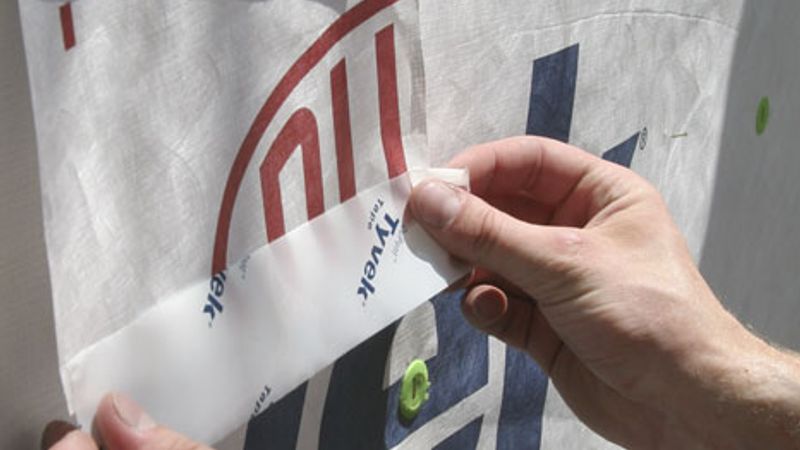Tape Housewrap Seams to Keep Water and Air Out
Building Skills: Moisture control the right way.

Our Building Skills video series is for new carpenters learning the basics of quality construction, and for old pros who want to share their experience.
In this episode, watch remodeler and Fine Homebuilding editor Justin Fink tape weather-lapped seams, and patch holes in new housewrap on an exterior wall. Getting these details right will keep water out, making your walls more durable. With taped seams, building paper can also work as an air barrier, helping insulation work better, and reducing condensation and mold growth in your walls.
Also read: To housewrap, or not to housewrap
Watch our previous episode of Building Skills: Installing Housewrap at Corners





























View Comments
Best practice does call for a mechanical patch over tears and holes as Justin shows. There are a few finer points when preparing a patch piece and the housewrap itself.
I start by sizing the patch piece at least 10 inches taller than the damaged area and a foot wider. I slightly taper cut the piece so the top is about 1 inch narrower than the bottom.
I place the patch piece over the damaged area as a visual guide for how wide to make the horizontal cut. Make the horizontal cut about an inch above the top of the damaged area - that way you don't have two loose flaps to contend with. There is no purpose for the short diagonal cuts that Justin shows; one single horizontal cut is all that's needed.
Then slip the top of the patch piece into the horizontal slice and push it upwards about 4 or 5 inches. Since the patch piece is tapered, it will fully fill to the sides of the slice for a much mechanical protection as possible.
Then you can tape around the perimeter - 4 straight pieces- starting at the bottom, then the sides then the top.
I learned this process from Carl Hagstrom. He's devised many housewrap installation details that have been adopted by DuPont and other housewrap manufacturers and included in their instructions.
I question the practice of taping the horizontal seams in housewrap. It seems to me that this violates one the golden rules of weatherizing: Allow water to drain.
With the piece above lapping over the piece below, taping this seam creates a pocket that could trap water. The water then can only travel horizontally until it reaches a vertical seam where it either get's trapped again or seeps behind the adjacent sheet to bare sheating.
Not only does the tape provide a great water barrier but it is a great air barrier.
I did a video on this for demonstration purposes. Its pretty cool.
http://www.youtube.com/watch?v=0OQl9d5YbIY